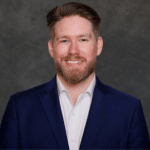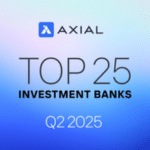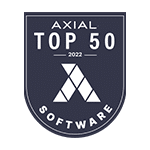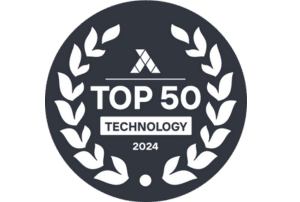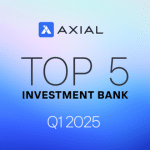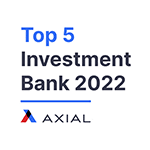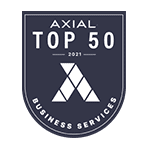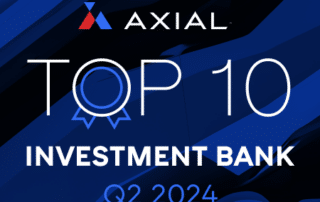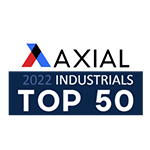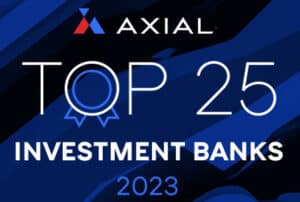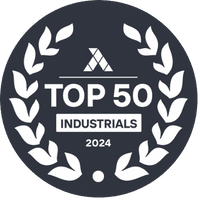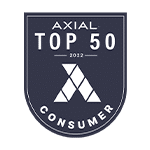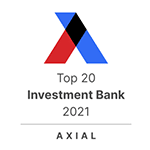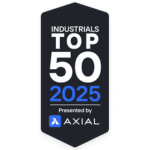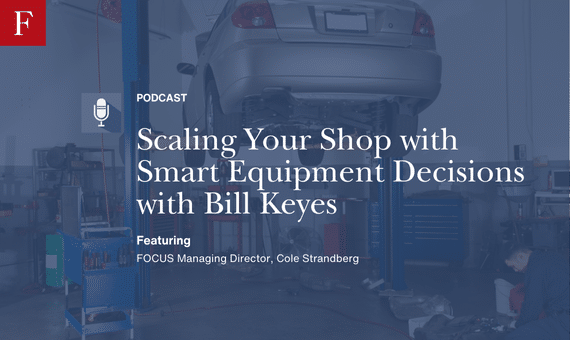
Scaling Your Shop with Smart Equipment Decisions with Bill Keyes
On this week’s episode, Cole Strandberg chats with Bill Keyes, a seasoned industry veteran and MidWest Division Manager at Hunter Engineering Company If you’ve ever wondered when it makes sense to bring alignments or ADAS calibration in-house, how to calculate ROI on your next big equipment purchase, or how to finance those investments without compromising your cash flow—this episode is for you.
Cole Strandberg: Looking forward to an awesome conversation. I wish we had hit record a few minutes earlier because we’re just sitting here talking about adas and the industry and all the exciting stuff happening. So figured it was time to go ahead and share our conversation. Before we do, we’d love to hear a little bit about yourself and your background in your own words.
Bill Keyes: Oh great. Yeah, yeah. So started working on cars when I was 18 years old. I worked for a company out of upstate New York, Worked for them for about 20 years, nearly 20 years, and then moved on to Hunter and have been in the commercial equipment business now since 2001 in a variety of different areas. Started in Detroit and I was there for 12 years which got me a lot of great experience working with the OEMs and some of the challenges that they had. And then I moved to California to see the other coast after originally being an east coast guy and spent 12 years there. And now I’m. I’m back Here in the Midwest. So I’m in the western side of Ohio and back in kind of my old area, if you would say.
Cole Strandberg: There we go. So for anyone watching on video, they will see a San Francisco 49ers helmet back there. Was that adopted during your time on. On the west coast or did you have an east coast team? Tell me about your sports allegiance.
Bill Keyes: It’s interesting. I actually I purchased that in like 1995 while I was living in Pittsburgh, Pennsylvania. Of course, as we all know, Montana is a Pennsylvania boy. So it’s just was a favorite quarterback of mine, so. So I got it then and have carried it from everywhere.
Cole Strandberg: I love it, man. It feels like for my generation, no matter where you were from, you grew up having Denver Broncos stuff during the era. So I, yeah, I love it.
Bill Keyes: It’s the quarterback. You know, I also suffered through living in Detroit when they were 0 and 16 at one point in time, so. So I’ve seen the ups and downs of football teams along the way, but I love it.
Cole Strandberg: Well, I was a Detroit fan just via Matt Stafford after his UGA days, but we won’t get into that. This is not a sports podcast. For better or worse, we are going to talk equipment. And I don’t think too many folks out there more qualified to help us talk about that. So first I want to kind of dive into how to go about thinking about and choosing the right equipment. What are some of the biggest mistakes that shop owners make when it comes to making equipment decisions?
Bill Keyes: Sure. I think in these days, you know, with the Internet and all, I think that they have, they tend to do better research than maybe they did in the past, but sometimes that research ends there, you know, and tangibly you haven’t really seen the equipment or see how it operates. So the thing I encourage with everybody, whether it’s replacing an old piece of equipment or maybe they’re thinking about getting into a new segment of business, is to see it in person, you know, to whether. Whether it comes to your shop and it’s put in action right there at the shop or you go to a trade show or in many cases industry people know industry people, right. So maybe they can go to. To one of their buddies shops and see how things operate, maybe get some feedback from them. So I guess the thing I would encourage the most is not to just shortcut it at what you can read on the Internet or what you get from, from marketing brochures and stuff like that. So I definitely encourage getting in front of the equipment.
Cole Strandberg: Super important, right? Demos, customer testimonials from folks who have actually used the stuff that you’re looking to use. Use, I think makes total, total sense. Are there any processes or resources out there that you would recommend? Kind of a one stop shop folks can use to do some of that research, even if it is the online portion, before they get out in the field and see it for themselves?
Bill Keyes: Sure. The interesting. And obviously I, I work for Hunter Engineering Co. But we have an ex, a vast Learning channel on YouTube which isn’t always directed exactly at the piece of equipment, but also the techniques or what are we trying to fix, Whether it’s resurfacing rotors on the car or on up to what we’re we’re covering these days, which is adas, you know, and what actually happens when you, when you try to reset in an ADAS system and you get to see those steps and begin to learn and think about how that would fit into your shop, you know, in your business. So I think that’s, that’s a great place to go and anything you can do to just kind of increase that knowledge base that you have, I think that alone will help limit the mistakes that you make because other people have made those mistakes. Take advantage of the fact that somebody else made the mistake and try to, try to learn from that, I think is important.
Cole Strandberg: No question about it. Well, I was in the equipment industry for six years. I grew up around it. And something that I saw that was a constant of some of the best salespeople in the space and the best brands in the space were if you need a Toyota level piece of equipment, you don’t need Ferrari. If you need a Ferrari, you don’t need something else. And I think kind of realizing what you need makes a ton of sense. What kinds of questions should operators be asking themselves before they make an equipment purchase?
Bill Keyes: I think that’s a great statement. And you know, with adas being kind of the new thing on the block these days, I think you have to stop and ask yourself what, what vehicles are coming into your place, right? What kind of age of the vehicles that are crossing your bay doors do you do mostly Toyota, do you do mostly the domestics, things like that? Because when you get into adas, for example, there’s so many different targets and it seems like there’s no crossover. Right? Everybody’s got their own target and has their own procedure. So I mean you can, you can spend thousands of dollars just on targets for maybe vehicles that you just don’t see in your shop, Cole. You know, and they just, and they sit there. So that, that’s kind of important when it comes to lifting capacity. Maybe for an alignment rack. What kind of vehicles are you doing there? What length are you? Do you have a good truck market? So do you need a longer rack? Do you need a higher capacity rack? You’ve got good commercial business vehicles coming in all loaded up with plumbing supplies and stuff like that. I think those are the things whether it’s a two post rack or an alignment rack or you know, your AC equipment, what kind of vehicles are you, are you working on? So I think that’s pretty important. Probably first number one question to ask yourself and then you, then you have to begin to budget yourself, figure out what do you expect to get out of this and what do you, what do you hope to pay to get yourself into it?
Cole Strandberg: Well, a great segue into the ROI conversation, but before I do, I, I sort of misasked that question, but it worked out. I meant Toyota versus Ferrari sort of in a silver, gold, platinum, not necessarily the brands, but the brands actually worked out perfectly. So I love when that happens from an ROI perspective. I know that’s something that Hunter has historically been really good. We, we wrapped Hunter back in our day and in my day they still do. How do you recommend going about kind of thinking about and calculating that return on investment for equipment like alignment racks or ADAS calibration systems?
Bill Keyes: Sure. Well, that may actually help cover the end of that question that you were hoping to get to in a good, better, best scenario. Right. So I think when you’re looking at an ROI and what you’re hoping to make out of this investment that you make is we always start with what the investment number is. Right. So then we try to peel that away by how much do you make per vehicle? What are you going to have to pay a technician to do it? Where are you going to get your traffic from if it’s a new market? You know, maybe you haven’t been in alignments before, maybe you don’t do brake work currently. So where’s that market going to come from? How long is it going to take you to develop that market that may control a little bit coal and what you spend up front. Right. So if you’re presented with a good, better best as far as the scenarios go, maybe you’re, maybe you’re walking in with better instead of best until you develop your market. Because equipment certainly can always be upgraded.
Cole Strandberg: No question. No, it makes total sense. And you mentioned specifically, and I guess I did as well, two functions within the shop that are sort of some of the functions that we most often see outsourced, and that is alignments and calibrations. At what point when you’re speaking with, with prospects or clients, does it make sense to consider bringing those capabilities in house?
Bill Keyes: Yeah, that’s, that’s interesting question. I actually, going to my California days, I had an interesting dealership that I went to, and Cole, they didn’t even understand, I think, how much they spent to outsource it, right? And it was a January, February situation, and I think, I think they spent over 20 grand to outsource ADAS calibrations, and they were closing in on 40 for February. So at that point in time, you start adding the numbers together and you’re like, gosh, there’s a couple of reasons you should do it here. Anytime you outsource something, you’re taking your reputation and you use and using somebody else to, to help identify that. Right. So you hope that everybody does things as well as you would, but you can’t always guarantee it. Right. The other thing is just, especially in these days where it’s so hard to get technicians, it seems like every place I go into, they’re, they’re running shorthanded. So now you’re going to outsource something, right? So now you gotta take two guys, you got one guy to drive the, the car that’s getting fixed, somebody to bring him back, and then you got to do that again when the vehicle’s done. And it doesn’t, I don’t know if it’s a fault of where you’re outsourcing it to or not. It doesn’t always get put at the front of the line when it makes, makes it to the outsourced place. So now you’re kind of at, at the mercy of what’s going on at that other shop. And when you get it back and when did you promise it to your customer and things like that, and then just the money, you know, I mean, I mean, if you could make a hundred bucks per alignment and you’re, you’re spending 80 bucks, 70 bucks to have it outsourced, you’re just really cutting down on the potential of your shop.
Cole Strandberg: I, I think that’s a great point. It’s so tempting to be exclusively quantitative when it comes to an ROI and equipment purchase, but that reputation piece for your, your sublet vendors is, you can’t really overstate the importance of that. Additionally, some other things along the lines of throughput efficiency and margin impact. When you’re assessing bringing this stuff in house Makes a huge difference. So it’s reputation, it’s. It’s an impact to the top line and the bottom line. I think the big question a lot of folks have is for many, many years we were told you can’t bring adas in house unless you have X. Whether it’s space conditions, anything of that nature. Who would you say can and cann ADAS calibration in house? As it stands today, I think we’re.
Bill Keyes: Seeing more and more opportunities where we can bring it in house. There’s probably three different footprints, you know, kind of like a modest footprint and then a little bit bigger and then the extreme. You know, there’s some vehicles on the road that take a tremendous amount of space. But when you look at those footprints, you probably can do 85% of the static stuff in a modest footprint. And we encourage people to get a little more creative with that space that they use. If you’re trying to recalibrate a camera on a driver’s side mirror, you can always move the vehicle to the right side of the bay that you’re in. If you’re doing a rear camera, bring the car into the bay further or back the car into the bay. There’s many ways to kind of slice that up. You’re not typical. I’ve only seen a couple operations where we’ve had to recalibrate three or four items on a particular car. It was from a collision shop. But typically you can get pretty creative with that space. Levelness of the floor is always comes up. I just did a seminar last week and that was a big question was how level does our floor need to be? Just speaking for our equipment, of course, but we approach it like we do an alignment machine. When we hook the sensors up to the vehicle, we’re actually checking out how level is the floor that we’re on. And we’re not doing it to say, hey, you need to move this to another spot. We’re going to take however out of level it is and we’re going to compensate in that for the system setting the targets after that. So, so, so to answer that question, shorter, I think it’s, it’s gotten better. You know, I spent my time in California working with Honda. Honda is the. Is takes the most space just because of the, some of the processes that they do for it. So it’s the tippy top of the space, the space taker for sure.
Cole Strandberg: We, we talked about some maybe notions that we got from when this industry was in its true infancy. I think a lot of folks could Argue that it still is in the early innings on requirements and outlook for the space. And it’s easy to hear something a decade ago and just assume that a lot of what was true then remains true today when it, it does not necessarily mean that’s the case.
Bill Keyes: Yeah, yeah. I mean there’s, there’s vehicles on the road as we move through the different companies that we’ve gotten our OEM approval from, where I can do many of their systems right on the alignment rack, for example. Cole. So here I am, I’m already in the alignment bay. I’ve done the alignment, which I always recommend before we do any kind of ADAS calibration, whether the, the OEM calls for it or not. You want to have the vehicle going straight down the road first. So I think that’s important. And do it right there in the alignment bay, which is, which is an awesome spot. So you’ve done the alignment. Now you just move into, whether you’re doing a forward facing camera or forward facing radar, do the whole project, print it all out and then move on to the next car. So I think the space thing is getting better.
Cole Strandberg: All right. And I know ADAS is the, the hot topic. I do want to spend a little bit of time on alignment. I know back in my time in and around the Hunter ecosystem, there was a lot of talk about collision alignments and getting insurance to pay and all of that stuff. What are you seeing in, in terms of adoption for alignments among collision centers? A stat before you answer that, that always stuck out to me was that alignments are often the most profitable thing on a dealer’s service drive. And those guys know how to make money. And so should we be doing more of this in collision repair?
Bill Keyes: We do. We definitely encourage that a lot more than we had. My, my background is not in collision, but I will tell you that we put together a system and a piece of software and we call it a collision blueprint. So there’s many other things that insurance companies are looking at when they are making decisions on doing an alignment and we take those into account. You know, where, how’s the body positioned on the actual chassis, you know, offset in axles and, and different wheelbase lengths and stuff like that. But the other thing that I encourage with some of our body shop customers, there’s a quick button on a Hunter alignment machine where you can park a car in front of it and just roll it and see what the camber, caster and tow is on it real quickly, kind of like a quick check, if you will. And it is so much easier to sell an insurance company in alignment on this vehicle than it is to argue about it when you’re just trying to button this thing up and deliver it back to the customer. Right. It ends up in that kind of that ping pong match at the end. You know who’s going to pay for it. And I think it’s just a better service for the collision customer. You know, you’ve taken a pretty good impact. There’s a good chance things aren’t quite right. Let’s check it out first. And we can handle that. Instead of an emergency at the end, we can handle it in the repair process.
Cole Strandberg: Makes total sense. Great input and feedback there. I want to talk about paying for this equipment. I think a lot of small business owners, for better or worse, generally love the idea of paying cash. But there are a lot of options out there that they go far beyond that. What are some typical financing opportunities available for body shops when it comes to purchasing equipment?
Bill Keyes: Sure, that’s a great question. You know, there’s always some sort of incentive out there for capital equipment where you can get, you can get equipment as low as 0% for 12 months. Right. And some of this is equipment, whether it’s alignment that we’re talking about. Cole, you can pay for a piece of equipment in a 12 month period doing one or two alignments a day, you know. So if you can use, I know some folks love to use cash, right. But if you can use somebody else’s money for zero or a pretty low interest, I think it makes better business sense, you know, to do that. Because throughout a 12 month period you just don’t know what’s going to happen in your shop. Right. It could be the roof air, it could be the sewer, it could be something else that doesn’t necessarily make you money. So why not use that 0% 12 month type of deal or even a 24 or 36 month deal to protect your cash flow. I think is, is a pretty important deal. So you still have the cash coming in?
Cole Strandberg: No, no question. Again, it goes back to that ROI calculation. What types of companies are doing financing like this for four body shops?
Bill Keyes: Well, we have, we, we have a great company that we partner with which is Great America out of Iowa. They do a great job. They, they partner with us in order to provide these 0% type of deals. I know that there’s a collision cooperatives out there that work together and sometimes they have finance groups that help them with that. There’s many, many, sometimes too many. Cole Equipment Financiers out there. So it’s, it’s tough to find the right one. I think if you work with the company that you’re purchasing the equipment with, they typically have one or two lenders that they, that they work with as well. But you go to like a collision show, you know, maybe a big collision show where they’ve got many vendors there. They’re great opportunities to find lending and cash that way.
Cole Strandberg: Perfect. Nope, I could not agree more by the way. And understanding you’re an equipment guy, not necessarily a finance guy, though. I don’t know, you could prove me wrong here. Any, any kind of color around how shop owners should factor in depreciation, tax advantages and that payback period when it comes to their financing decision.
Bill Keyes: Sure. I mean there’s, there’s a lot of things. Obviously a good CPA is always helpful to help you make the right decision. Most pieces of equipment that we deal with is typically like a five year depreciation deal and it has much more impact on the taxes that that business is going to pay. So I do think that’s something that you want to take into account. You don’t want to just sign up, get your piece of equipment and go on. You want to take advantage of those tax benefits. And for many years now, as we come to the end of a work year, if you’ll call it a work year, Section 179 is probably the best to do because you can take a 50 or six, your CPA is going to come to you and say, listen Cole, the podcasts have been going great. You, you need to, you need to buy something, right? You know, and you take a 50, 60, $70,000 piece of equipment that you could write off most of or all of it in a one year period to offset maybe you had a great year, you know, in a revenue and a profit standpoint and help bring that taxable number down. I think that’s, that’s important things to consider. You know, we too often just consider the basics, but behind the scenes, that’s what helps you make money and helps you make those kind of investments. Good point.
Cole Strandberg: When, when approaching lenders, obviously there’s an element of you need to sell them that you’re good to pay this money back. What are lenders typically looking for out of clients?
Bill Keyes: Well, obviously the first thing that they look at is, is the credit score. Right. And then I think the quality of the equipment and the, and the plan that they’re looking at, I’ve had many times, you know, where sometimes people default, you know, so, so the, the lending company is going to be a little sketchy about what are you actually purchasing because sometime that equipment could belong to the lending company, you know, if things don’t go well. So you’re going to want to make sure that you got a good plan put together good quality equipment with warranties and, and all that kind of stuff. And as far as a good plan put together, who’s, who’s going to operate it, how’s this going to add to your business? Things like that. Most, most of your lending situations too, from a tax standpoint work more like a lease kind of a lease to own, which is very good for your box score. You know, as far as anything else that you may need to purchase in this calendar year, you’ve got this lease setting out there, but it’s not really impacting the fact that now you’ve got to put, you know, four garage doors in or something like that. Does that make sense?
Cole Strandberg: Totally. Yep. The lease thing, the dollar buyout kind of traditional structure is a great, a great thing. Absolutely. I know it well. And a great option. And typically are they still requiring kind of two years minimum in business?
Bill Keyes: Yeah, yeah. But there are, there are companies and, and many, many of your leasing companies, let’s say that you’re, you’re rebuilding a little bit and, and you’re a little edge maybe on the, on the credit score or something like that. They have, they have ways of, they work with other companies within their group that they can, can try to get you there. And, and the same applies to that. You’ve been in business for 12 months. Right. And, and so you don’t fit that two year period. What do we do with it with this company? Right. So they work with that pretty well.
Cole Strandberg: Awesome. Yep. Typically where there’s a will, there’s a way. Not always, of course, but I know a lot of companies will work with their, their a credit folks and then they got a different company for maybe their BNC credit folks. So a lot of options out there and kind of heartening to hear if, if there is a problem with the quantity of lenders out there, it might be that there are too many of them. I think, I think, I think you’re.
Bill Keyes: Right there and ending it. And another thing to consider is they’re always going to look at it as the business. Right Cole? And that’s what they’re lending the money to. A lot of times if you’re in that spot where maybe you haven’t been in business long enough, they will look at Your personal credit too. And if you can sign a personal guarantee that may help you get into the business, that’s going to help make you successful. Right? You hate for this hurdle to eliminate an opportunity for you to get into a segment that’s going to be really, really good for you. Highly profitable, of course.
Cole Strandberg: Makes total sense. The equipment kind of consultant relationship with clients is a really unique one. You get a behind the scenes look. Typically once you’re kind of in, the guard goes way down. And just like in my experience on the collision vision, you get unfiltered access to a lot of really bright minds across the industry and so want to ask a couple questions about those guys. How from an equipment perspective do some of the best operators that you work with approach planning for, for equipment or facilities, what have you as a part of their broader growth strategy?
Bill Keyes: I think the word that you said they’re planning or having a plan is the biggest difference without question. Cole. Many, many folks that don’t have a plan, it comes up when it’s an emergency, right? When it’s on fire or you gotta, you gotta replace this thing. You don’t necessarily get the best deal, right? You can’t find the best financing. So the ones that I see, whether it’s a single shop owner or they own multiple shops, are the ones that have some sort of capex plan, right? They know that their alignment machine is already 7 years old. They know once it gets 8, 9 or 10, it’s getting pretty long in the tooth, right? So they’re beginning to look before it makes it to that point where hey, it broke down today. Parts are no longer available for this piece of equipment. Now what do we do? Well, now we’ve got to make an emergency purchase at possibly a high price at terrible lending, you know, or you’re using up some of your cash flow to do it. So I think just planning ahead, you know, is the best, is the best way. If you’re a brand new business and there’s five segments that you could possibly get into and you’re going to get into three of them. While you’re into three, trying to make your business go, you should begin to think about those other two and when do they become important? When can you afford to get into that type of stuff as you expand your business.
Cole Strandberg: Not necessarily the sexiest advice, but it’s awesome advice. Planning ahead. Build out that plan, whether that’s for your business, for your equipment or all the above. It’s a great thing and kind of allows you to think about things when it’s, it’s level headed before something’s an emergency, before you have to shoot from the hip, you got this plan figured out where you know exactly what’s going to happen when the inevitable does come.
We’ve talked a lot about kind of newer segments for the collision repair industry, certainly in adas and not a ton of adoption. Maybe on the alignment side though, that’s increasing. Talk to me a little bit about equipment replacement or upgrading. When does upgrading equipment become more about, you know, adding to the customer experience and overall improving your business than maybe just a cost on, on your P and L?
Bill Keyes: Sure. I mean there’s many times that you can think about that. You and I, even before the segment today, we talked about, you know, how hard it is to get people, for example, so as, as we begin to try to rebuild that hands on type group of folks out there, sometimes we need a piece of equipment that makes it easier. Right. So when it comes to the customer experience, like how quick do I get my car back, do I get it back, you know, without having a wheel that’s been scratched or damaged or you know, something like that. I think getting pieces of equipment that aid your technicians and doing that, that’s going to help the efficiency of the shop. It’s going to help your customers be more satisfied. They’re not going to have to come back to have it fixed again. Only thing worse than taking your car to get it fixed is having to bring it back and having to sit there and wait again to get it back again. So I think those, those are pretty important. Just expanding more services for your customer. Right. If you’re that guy that started out doing three segments of different kinds of business in your shop and they keep asking, they keep saying, hey, can I just get my alignment here? You know, adding that so now that you not only retain that customer but that, that in itself will be a better experience I think for that customer. Without question.
Cole Strandberg: No doubt. You mentioned a couple minutes ago kind of whether you’re a single shop owner, a multi shop owner. I think there’s a real listener base here on the collision vision where it’s an in between. Maybe it’s a single shop owner who’s looking to become an MSO, who has that vision for growth. From your perspective, what advice would you give that shop owner who’s looking to scale maybe from one location to multiple locations?
Bill Keyes: Yeah, yeah, I think it’s a great thing to be able to do that. I mean you’re taking all the skills and effort and investment that you Made in one and, and you’re like, hey, let’s duplicate this. So that’s probably the biggest thing, is to duplicate it where you can. The market may be a little different where you’re moving, but I think if you’ve got a great plan going on, where you at, where you’re at, and you make great decisions on equipment and employees and marketing and all that kind of stuff, I think you need to go with that plan under your arm when you go to find this next location and try to do that. What does happen though is you have one location and you got a great bunch of guys, right? And you’re like, I’m going to open a new location. I’m going to make Cole the manager. I’m going to take him over there.
Cole Strandberg: That’s your first mistake.
Bill Keyes: You, you begin to, you begin to like, thin out your herd a little bit, right? So, so as you’re looking at becoming that mso, I think proactively you need to build your bench a little bit, right? Get, get your strength in that shop. Say, hey, I’m going to get a new guy in. We’re going to. Cole’s going to work with him for 12 months and then Cole’s going to the new store and then this guy’s going to be well prepared to take over the store that we have now. So I hate to say everything comes.
Cole Strandberg: Back to personnel, but everything comes back to personnel. Absolutely. I, I look at a ton of financial statements of shops that are going through exactly that where maybe for six months or 12 months, you’re sort of really heavy on, on payroll for a little bit as you’re ramping up to take down that new location. And that’s, that’s called foresight. Though it might, might be a little heartburn at times, but it’s certainly helpful as you end up scaling. Very good, man. This has been an absolute pleasure. It’s always fun to get back and talk about the equipment space. As we spoke about in our pre show call, I’ve had the chance to go to Hunter HQ out in St. Louis on multiple occasions. An amazing facility. There’s some super secret parts that I’m not allowed to go into. Was never allowed to go into.
Bill Keyes: So a lot going on me e. They don’t.
Cole Strandberg: Oh, there we go. Well, well then maybe I don’t have to dance around this question so much. Are there, are there any new technologies coming from Hunter or in the industry at large that you have on your radar that you’re excited about and that shop owners should keep on their radar.
Bill Keyes: I, I just think more broadly we, we’ve made a lot of steps towards autonomy and ease of use type of things. I think that’s, that’s going to be a growing space within the equipment. You know, less, less interaction with, with a person to actually do the, the job that you’re doing for one. I can speak on that because I, I know that’s a theme of ours, but I can also say I know that you’re a big fan of sema and, and I always encourage all of my customers to come to SEMA because it’s a great place really to get a future look at some stuff. And, and, and selfishly, Hunter always releases the newest at sema. It’s a big, it’s a big deal for us as well. Whether it’s, whether it’s a product or we’re just testing you a little bit. You know, it’s good to see from all companies all the kinds of stuff that you’re going to see and that’s going to help the guy. You know, going back to the MSL guy, I just, just quickly he needs to lean on that community of folks that do have multiple locations and, and just kind of learn from them. What, what are some of the best practices? Because having two, two locations you already have certain fixed expenses. Now all you’re doing is you’re working on getting more money come in, coming in, go to events like SEMA where they have lots of breakout sessions where you can gain knowledge and learn from other multi store owners and things like that. So some pretty cool stuff. So that’s the most I can tell you.
Cole Strandberg: All right, man. I appreciate very politically correct answer. You’re not going to be hearing from, from Hunter legal because of anything you said just then. I guarantee it. Very good, man. And, and you took the words out of my mouth in terms of SEMA would echo that. If, if it’s on your radar, if you’re thinking about going this year, take the leap. It’s worth it. Some really cool stuff going on. Absolutely. Well, Bill, it has been an absolute pleasure, sir. I appreciate you spending some time with us. Where can people A get in touch with you and B learn about all that Hunter has to offer?
Bill Keyes: Sure. I mean www.hunter.com is the best place to go. You’ll find all of our product pages there and a lot of learning information you can even put in your zip code. And you’ll, you’ll either get me or you’ll get someone just like me in your area, which I always encourage to talk to your local folks and, and see how they can help you. And, and last but not least, come to sema. I’ll be there every single day. And if you’re a dealer out there, come, come to nada. We’ll be there as well. And, and it’s a great time for us to, to chat. You’re not in your environment, you know, you’re not trying to answer the phone or you got, you know, all these cars going on. That’s the other thing. That’s the beautiful thing about some of these trade shows as you really can, you can learn a lot and frankly, we learn a lot there too, just from talking to customers.

